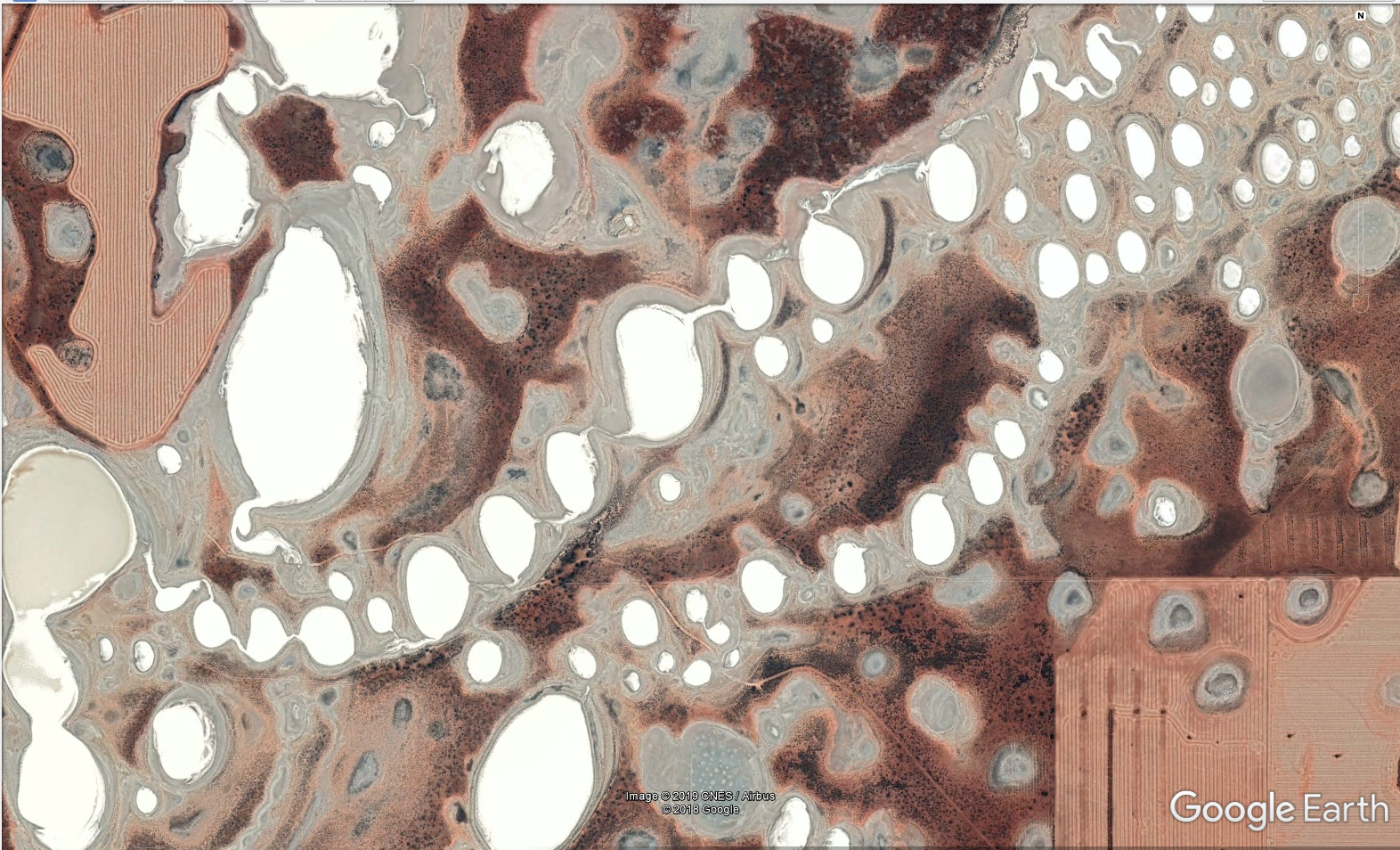Ever wondered why salt lakes in the wheatbelt, when viewed from the air, seem to line up like a beaded chain, all oriented in the same direction? You can blame the processes called “long axis orientation” and “lake segmentation”.
The orientation of the lakes can tell us about the climate of the past by indicating which direction the prevailing winds were coming from.
Ever wondered why salt lakes in the wheatbelt, when viewed from the air, seem to line up like a beaded chain, all oriented in the same direction? You can blame the processes called “long axis orientation” and “lake segmentation”.
Our salt lakes were formed when the Darling Scarp was raised, causing the westward flowing rivers to slow down and start pooling to the east creating the conditions for the salt lakes of today to begin formation.
When the prevailing winds blew cross these long, shallow water bodies, they set up orbital currents that moved sediments in a manner that created paired spits on opposite shores at relatively equal intervals along the length of the river channel.
Over a long period of time, the spit formations got so long that they joined across the river channel, segmenting it and forming strings of small lakes, all oriented in accord to the wind direction of the time.
The orientation of the lakes can tell us about the climate of the past by indicating which direction the prevailing winds were coming from. The processes are still operating today, although will be most active in lakes that hold water for a long period of time. There are oriented lakes in other arid regions of the world and the same processes can also be responsible for the formation of coastal lagoons.

Figure. 1. Chains of oriented salt lakes near Morawa WA. In this example, these lakes were formed during a time when the prevailing wind come from the NNW.


